DIGITAL TRAIL TRANSCRIPT
TCH & Common Sense Media - Following A Digital Trail - Barb Jizba
Barb Jizba:
How's everybody doing today?
Students:
Good.
Jizba:
Good or really good?
Students:
Really good.
Jizba (Interview):
I am Barb Jizba. I teach at Wilson Focus School in Omaha, Nebraska and I am the School Librarian.
Jizba:
What other kinds of things on a bulletin board might I see in a classroom? There might be a page like that where you show work. What else might I see?
Student #1:
Pictures.
Jizba:
Pictures of kids.
Jizba (Interview):
Today's lesson, it is called Following a Digital Trail, and we have three targets basically that we're working on today. The first one is to learn what kinds of things are safe and unsafe to put on an Internet site. The second goal we're working on is working on our communication skills in a small group and being able to share those things. And finally we're doing some reading skills with contextual clues and summarizing.
Jizba:
What I want us to really learn and to be thinking about when we do our fun activity today is I can become a detective and learn what information is safe online. We're going to find out about the kind of information that Mizel and Electra put online, and what information helps us as detectives and what information doesn't help us. Put your hand up and swear, I now work.
Students:
I now work.
Jizba:
For Things Big and Small.
Students:
For Things Big and Small.
Jizba:
Detective.
Students:
Detective.
Jizba:
Agency.
Students:
Agency.
Jizba:
And you're going to be looking at clues and helping me decipher these clues.
Jizba (Interview):
We're going to start looking at what digital footprints are and looking at pictures throughout the whole lesson of this great big elephant footprint and these little tiny mouse footprints.
Jizba:
You need some clues to help you with your job today.
Jizba (Interview):
The students are going to start analyzing as a part of their reading skills. I'm going to throw out 12 cards to each table where they have to start deciphering and looking at all the pieces of information and analyzing which pieces of information fit the key words that I'm giving them.
Jizba:
Can you see on those cards is there any information about your name? Remember, teams, you got to get that information to your captain so your captain can raise their hand. Okay, Tristan, can you tell me something you found that helps me understand the name.
Tristan:
Electra put her whole name and now we can look her up on the Internet.
Jizba:
She put Electra Ella Elephant. Jonathan, what information did your team find about where somebody might live.
Jonathan:
123 Water Hole Land, Peanuts, Ohio.
Jizba:
Oh my gosh, they gave a full address, didn't they? What else did you find?
Student #2:
Where you live. Mouse Hole.
Jizba:
Oh, one of them lives in a mouse hole. Do you think we'd be able to put mouse hole in Google Earth and find it?
Students:
No.
Jizba:
Probably not.
Jizba (Interview):
As we move through the activity, the kids then are going to really take those clues and start to make some decisions about which individual actually did the best about being safe on the Internet and which one was not so safe on the Internet.
Tristan:
Mizel, she gave her like favorite foods and her hobbies and.
Jizba:
Okay.
Tristan:
But Electra, she gave her birthday and her, and all her secrets and where she lived.
Jizba:
Anybody know what kind of information you call that when you give your name and your birth date and your address? What do you call that?
Tristan:
Personal information.
Jizba:
Personal information.
Jizba (Interview):
Once they get through their group work, we want to go back and really define some of the things we've been looking at. We've talked about footprints. We've talked about digital. We've talked about those things but we want to really define those terms to make sure the kids are understanding them.
Jizba:
Raise your hand if you can tell me what a digital footprint is because I want us to know what that word means. What do you think it is, Ryanne?
Ryanne:
I think it's where people can follow your tracks, like if you have a big foot and you like walk into mud, people can find where you are.
Jizba:
I think you did a really good job telling me about footprint.
Jizba (Interview):
As I'm using Common Sense Media, I am also trying to integrate reading a Language Arts Skills. So one way I do that is at the end of our activity, I'm going to do a summarizing activity.
Jizba:
Read with me.
Jizba & Students:
I can summarize what I learned on a chart comparing safe and unsafe information for the Internet.
Jizba:
Captain, go ahead and start. Safe and unsafe. Because we're going to summarize what we're doing today. Go ahead.
Tristan:
Is that safe?
Student #3:
Yeah.
Student #4:
It's not a big secret. She already put it.
Student #5:
We did our homework to fun stuff. We got to write on the tables and we also learn about what's safe and what's not safe about the Internet.
Jizba:
What's unsafe?
Student #6:
This.
Jizba:
Address. So put over here, not safe, address.
Student #7:
Like if you put your whole name, that's not what you're supposed to do. And if you like put just your first name, then you can do that.
Jizba (Interview):
They learn through social media. They learn through creating. They learn through going to the Internet and searching for things. So why not teach skills that are going to let them use those tools in the most appropriate manner.
Jizba:
Give a thumbs up if you think you, that we all did a good job with cooperative groups and getting information to our team captains.
Jizba (Interview):
I heard them saying you know that wouldn't be safe or that would be safe. And I had them questioning some things. Really talking about how could somebody find something about this or how could somebody find something about that. Then I, you know, I believe they're getting it. I think they were engaged in the lesson.

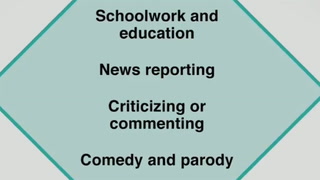

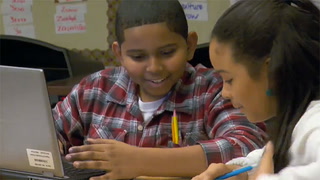

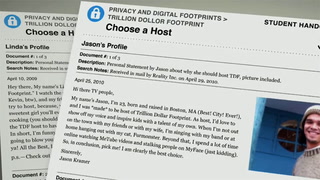

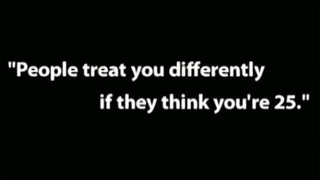
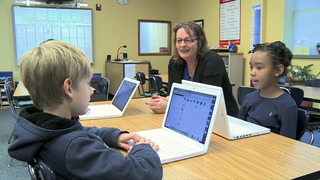

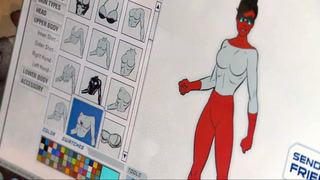



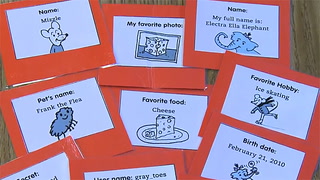








16 Comments
Beth Scott Feb 12, 2019 12:34pm
Love this! Can you share the content from the cards with me?
beth.scott@rcstn.net
Erin Wheeler Jun 26, 2015 8:13pm
Natalie Alexander Mar 3, 2014 4:07pm
Saundra Warren-... Jul 17, 2013 12:30pm
Julia Chope Jul 11, 2013 1:07pm